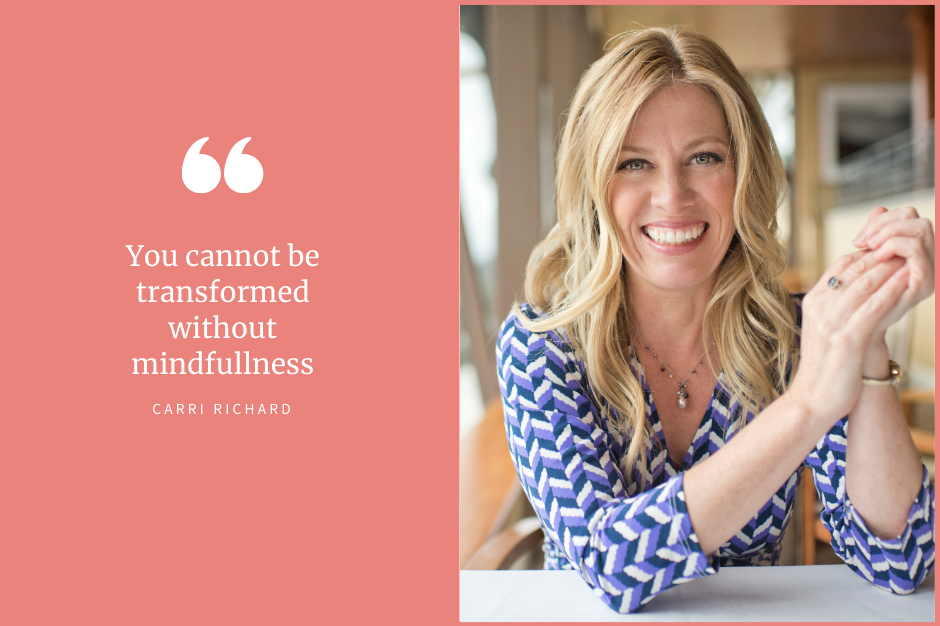It’s almost springtime here in the northern hemisphere and the world is beginning to transform. We’ve got some buds on the trees, the days no longer need a down jacket, longer days of light, the crocus and daffodils beginning to make their presence known. Each of these markers are part of the transition to spring here in Virginia. This transformation is intentional. There is such order in nature and this is why so many humans find peace in it. Do you?
Nature is nothing except what it is. It is intentional.
Are you always intentional? Us humans, well, we’re a bit of a different story when left to our own devices 😏. We have both filters and patterns in our brains that we’ve created based upon our unique experiences, and these patterns shape our view of things. We do not run purely on instinct and order – in fact, we are not really ordered at all, without mindfulness and intention. And without mindfulness and focus – transformation eludes us.

Just as nature, with its order, can be so very calming, you can create this calm order or serenity in your own environment through intentional living. And the foundation for intentional living is mindfulness.
When you dig into those who are most successful in their fields, whether it be academic, professional, athletic, creative, etc, the common denominator is conscious, intentional living. Each of these folks has developed new, focused filters and patterns that align to what’s most important to them. You can too.
Mindfulness: The Gateway to Intentional Living
We’ll look at mindfulness from a few different angles as well as WHY it’s important, and best of all, what you can do about it.
Mindfulness. It is a topic that is very familiar these days. What does it mean?
- The Buddhists actually have issue with the term mind-full-ness. They claim it describes the exact opposite of what it really is. Mindfulness begins with emptying your mind – so, mind–emptiness is closer to the concept. It’s necessary to let go of all of the noise so that you can focus, and place your whole mind onto something.
- From a Quantum perspective, it is the space provided to intentionally observe that allows for clear decision-making (and results!) When the mind is noisy, there is attention/observation all over the place…fixing infinite possibilities into this space and time (right now). When the mind is observing everything, it can cause overwhelm and complication. This leads to reactionary action, which never works out. In my high-tech, troubleshooter days, we called this “spray and pray” or some call it “throwing everything but the kitchen sink” at the problem or issue at hand. This does a few things.
- Kill them with confusion and complication
- Works on the premise of hoping to ‘get lucky’ v. solving the issue and learning something in the process (so as not to repeat it).
- It’s unfulfilling and messy (and in a professional setting, this does not instil confidence or promote business).

Here is how you can incorporate the role of mindfulness in enhancing self-awareness and making conscious decisions.
- Slow down. Step back.
- Get quiet. If you’re always running the patterns in your brain by default, you’ll keep getting the same result.
“any growth comes from being open to ideas outside of the patterns we run.” -Carri
This slow-down, step-back, and focus are powered by mindfulness.
Through regular practice of mindfulness, individuals can expect to experience a profound shift in their inner landscape. A sense of calm and serenity replaces the chaos of a busy mind, creating space for clarity and insight to emerge. By being fully present in each moment, we become more attuned to our inner guidance, enabling us to make decisions from a place of authenticity and alignment with our true selves.
Benefits of Combining Mindfulness with Intentional Living
One key benefit of mindfulness is its ability to enhance our decision-making process. When we are mindful, we are not reactive or driven by impulse; instead, we approach choices with a sense of clarity and discernment. By quieting the noise of our minds and tuning into our inner wisdom, we can make decisions that are in harmony with our values and aspirations, leading to a more fulfilling and purposeful life.
Mindfulness is not just a mental practice; it also has tangible effects on our physical and emotional well-being. Research has shown that regular mindfulness meditation can reduce stress, improve focus and concentration, and enhance overall mental health. tm.org shows hundreds of studies done over the last years on physical and mental wellbeing and you can find more details on their website tm.org. It’s been shown to reduce stress, improve mental health, and allow for better sleep, better focus, and overall well-being. By incorporating mindfulness into our daily routine, we can cultivate a sense of balance and harmony that permeates every aspect of our lives.
No matter the modality, the act and practice of mindfulness, awareness provides great rewards.

Practical Steps to Cultivate Intentional Living Through Mindfulness
- Get Calibrated
- Be Curious.
Get Calibrated.
What are your values? If you’re not sure how to answer that question, I offer this amazing exercise to get you centered and begin to build filters that serve you, your life, and your community. Download the values exercise here. When you complete this – keep those values in your view, each day.
Intentional Living is done through conscious creation of filters / patterns that align with your values and priority. This is the opposite of living by default or being blown about by life.
- You get to choose.
- When you have clarity on what is most important to you, you’ll reflect on this in your decisions.
- You understand what a decision is and what it is not (if you’re unsure, see more here in my blog about Aligned Decisions here)
This type of living allows for space, conscious choice, freedom, responsibility, success, well-being, and a more empowered life – aligned to who you are, and powered by choice. When you live intentionally you’ll also find more time for what’s important, boosting your well-being.
Be Curious.
Notice how life “works” for you. You can do this by holding an idea in your focus and be curious about how it’s reflected in your life.
For example, be curious about what happens when you smile at everyone you meet that day.
Be curious about what happens when you don’t complain that day.
Be curious about making one of your 5 values above your top priority that day.
I have a tool to practice awareness in your own life and you can find the card deck here
Conclusion
In essence, mindfulness is a powerful tool for self-discovery and personal growth. By embracing mindfulness as a way of life, we open ourselves up to a world of infinite possibilities and transformation. Through the practice of mindfulness, we can access our inner wisdom, cultivate clarity and alignment, and embark on a journey of self-realization and fulfilment – ultimately, intentional living.
Bottom-line, mindfulness requires confidence, curiosity, courage, and consistency. The confidence that there is more than the stories your mind tells. SO much more. Mindfulness requires curiosity, for example wondering who is thinking all these things? Mindfulness requires courage, to step back, slow down, and be willing to see what shows up when you do. And most of all it requires consistency. Practice. We work with and speak to our brains through repetition, always.
Mindfulness opens up the world, opens doors, connections, and really allows you to see that life is FOR you. 🥰
Want to get intentional in your life and need to know more. I’m here to help.
Much love,

